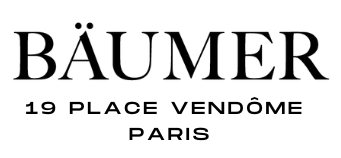The color of the stone is one of the characteristics of the “4Cs”, making it possible to determine the price of a diamond, based on its classification. This differs between white or colorless diamonds and colored diamonds. Indeed, where white diamonds are estimated according to a scale of hues ranging from bright white to pale yellow, colored diamonds, which are much rarer than colorless (5% of diamonds) are classified according to their intensity.
What are the gradations of white or colorless diamonds?
The international reference for gradations of white ranging from colorless to a tiny tint of color is that of
Gemmological Institute of America (GIA).
The appreciation of the color qualified by a letter from D to Z is decisive in the value of the diamond because the more the diamond is white, the more it has value. The GIA classifies diamond colors according to the letters: D for pure white to Z for a very pronounced yellow.

How to determine the color of a diamond?
To appreciate the color of a diamond, you have to place it in a fold of white bristol and observe it from the side and in profile so as not to be disturbed by the fire of the facets. This observation with the naked eye is also done under a very white light.
This observation is accompanied by a comparison since to determine the hue of a diamond, the appraiser uses standard stones called “master stones” with which he compares the diamond studied to determine its color.
These standard samples must also respect certain carats because the larger the diamond, the more intense its color. This is why for stones up to 1.50 ct, the sample must weigh at least 0.25 ct, while for larger diamonds, it must weigh between 0.50 and 0.75 ct minimum.
What is the tint treatment?
It is possible to artificially change the color of a diamond so that brownish to yellowish diamonds get a more "white" hue.
This method, called "HPHT" or High Pressure, High Temperature, consists of correcting an error in the crystallographic structure of the diamond (which is the source of the more intense color) and involves subjecting the stone to conditions close to those of its formation to perfect its structure. The gems are thus heated to more than 1500°C and under a pressure of more than 50,000 ATM.
This treatment is permanent and can only be detected in state-of-the-art laboratories using infrared and ultraviolet spectrum analysis.
It is mandatory to notify this processing, either orally or in writing. As a result, this process falls into the category of “Color enhanced” gemological certificates. The diamond thereby loses value, as it is artificially processed.
What are colored diamonds?
The natural color
Colored diamonds, also called frank tint, are rarer than white diamonds and result from the presence of gas at the time of crystallization of the gem. The color varies according to the type of gas to which the carbon atoms have been exposed: for example, the presence of nitrogen will give a yellow diamond while the presence of boron will bring out the blue color.
Colored diamonds have their own classification according to their chromatic intensity. Therefore, the “Fancy Color” of a diamond, namely its hue, is estimated according to its intensity: the more intense the color, the higher the value of the diamond. The designation "Fancy" begins after the "Z", a hint of color being accepted for the diamond scale White: Fancy light (very low intensity)
• Fancy (low intensity)
• Fancy intense (slightly intense)
• Fancy Vivid (intense)
• Fancy Deep (very intense)
• Fancy Dark (very very intense)
In addition, the most popular colors on the market are: hydrangea pink, lemon or canary yellow, blue, water green, purple, red and orange. Conversely, grey, brown and black are less appreciated and their value remains very accessible.
The color treatment
It is possible to artificially change the color of a diamond by irradiation and heating. However, this transformation of the diamond remains imprecise: the color depends on the original shade of the crystal and there is never any certainty as to the result. In addition, the color treatment results in stones that will be less qualitative than a natural colored gem. This treatment is permanent.
As with the modification of the hue of a white diamond, it is impossible to determine whether a treatment has taken place without the intervention of a laboratory. It is mandatory to notify this processing, both orally and in writing. As a result, this process falls into the category of “Color enhanced” gemological certificates for diamonds. The latter then loses between 60 to 80% of its value.
What is the phenomenon of fluorescence?
Fluorescence is a luminous effect exhibited by certain diamonds when they are exposed to ultraviolet light: they then emit visible light, generally blue (i.e. in 95% of cases) but also purple, orange or red for rare gems.
This fluorescence must be quantified using fluorescence standards and indicated in the certificates according to the following gradation:
• None or Nil: none
• Very slight: very light
• Slight or Faint: Slight
• Medium: Medium
• Strong: strong
• Very strong: very strong
For Medium to Very Strong fluorescences, the diamond may (not always) have a slightly "milky white" hue. Indeed, if the fluorescence is not directly linked to the color of a diamond, it can however influence its price and its transparency, even if this last influence remains disputed by the experts.












